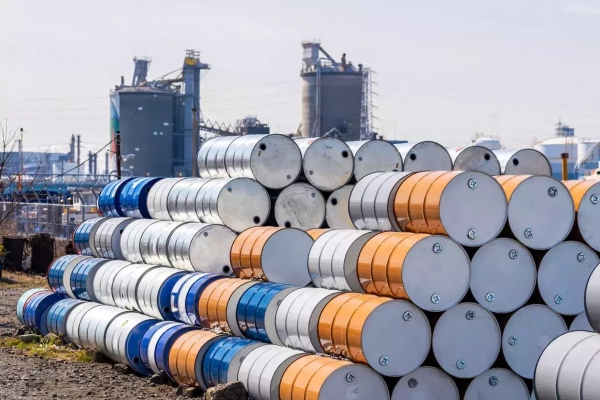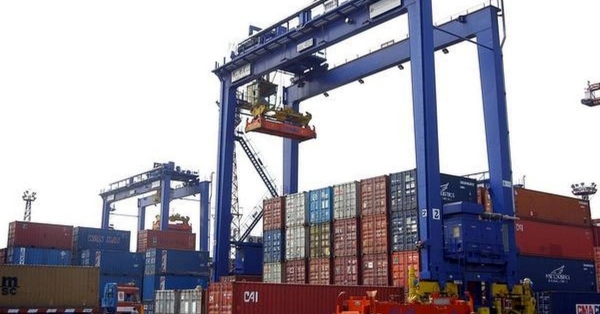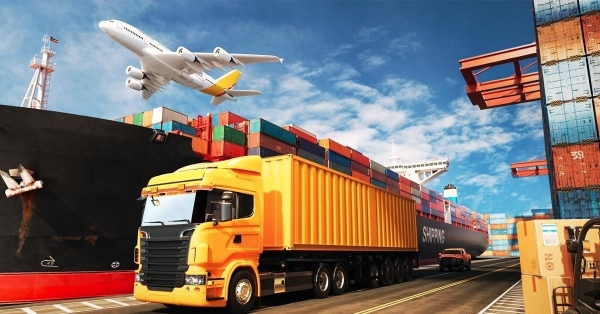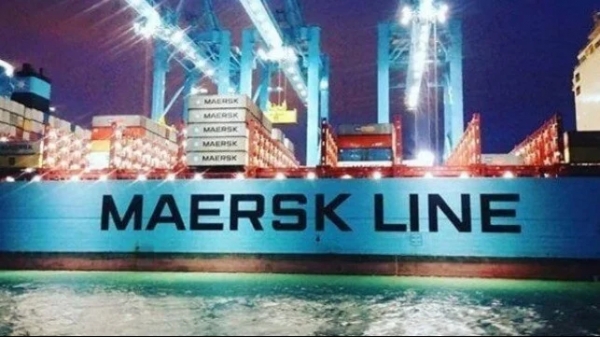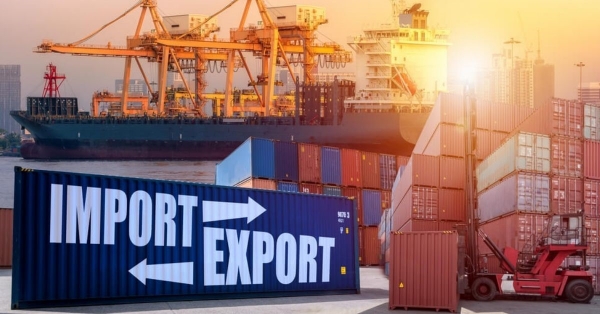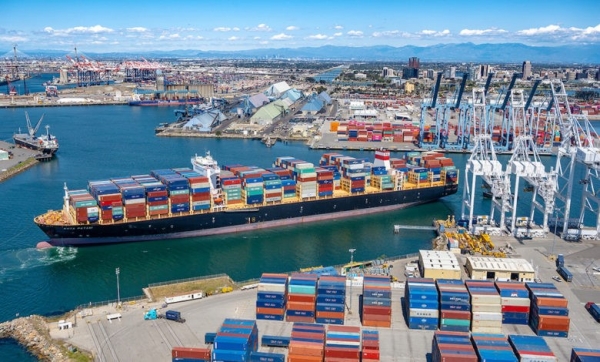News
Latest news
Kazakhstan Bans Oil Product Exports for Four Months
Kazakhstan, one of the world’s largest oil exporters, has revealed its plans to halt the export of oil products for a four-month period.
The statement issued by the Kazakh State Revenue Committee on February 8 stated that the order will come into effect 10 calendar days after the announcement.
“The ban applies to gasoline, diesel fuel, and other petroleum products with the exception of lubricants,” Interfax reported, citing the statement.
With the export ban, the country aims to protect its own domestic energy supply and to ensure that the citizens of Kazakhstan are not deprived of the energy they needed to survive.
The move extends a similar ban on oil products, which was introduced in November 2021 and later expired on May 21, 2022, a time when the country was struggling with a shortage of motor fuels.
Kazakhstan is the ninth-largest crude oil exporter globally. The country holds three percent of the world’s total oil reserves, and it is the third-largest oil producer in the Caspian region, after Russia and Iran, but has a lack of direct access to the ocean. Kazakhstan doesn’t have a pipeline to export Kazakh gas to the EU. Novorossiysk on the Black Sea is the main route to export oil from the world's largest landlocked country.
With over 70 percent of its oil exports going to the EU, Kazakhstan is already the third-largest non-OPEC supplier of the bloc, which is considered one of the most prolific markets for energy exporters, given its lack of domestic resources.
The country entered the global oil market in 1993 after the country’s government and Chevron agreed to establish a giant oil-production venture, Tengizchevroil, to produce oil in two big fields near the Caspian Sea. In 1997, Kazakhstan signed a production-sharing agreement with seven international companies, including Agip, British Gas, BP, Mobil, Shell, Statoil, and Total.
The ban in Kazakhstan came days after the EU embargo on imports of Russian fuels and the price cap on diesel and other products came into effect. On February 5, the G7+ Coalition and all EU Member States adopted further price caps for Russian seaborne crude in a bid to both deprive Moscow of a major revenue stream and curb surging global energy prices.
The embargo has been coupled with price caps for deliveries to third nations, agreed upon with the G7 in the same way that the EU and the G7 coordinated the price cap on Russian crude last year.
So far, two price caps have been established for Russian petroleum products: one for "premium-to-crude" petroleum goods like diesel, kerosene, and gasoline, and the other for "discount-to-crude" petroleum products like fuel oil and naphtha. The first price cap was set at $100 per barrel, while the second was set at $45 per barrel.
Under the deal, EU and G7 countries will ban banks from financing the purchase and sale of Russian oil, insurance companies from insuring shipments, and ports from unloading oil transported by tankers if it is traded at a higher price than that fixed by the European Union.
The European Union's price cap was sharply criticized by Russia. In early February, Moscow imposed a ban on the sale of oil to states and entities that support the price cap imposed on Russian oil. With the exception of situations that require special permission from the president, the ban will be in effect for five months. The move also prohibits purchasing raw materials from Russia, even through intermediary countries or supply chains.
Ethiopia, Pakistan Sign A Bilateral Trade Agreement
Ethiopia penned a trade agreement with Pakistan with a view to strengthening its trade relationship with the Asian country. Kassahun Gofe, State Minister of the Ministry of Trade and Regional Integration, said, “I strongly believe that the signing of this trade agreement is a good platform to establish a joint trade committee meeting and consult on measures that ensure the development of the two countries and reduce trade barriers”.
The bilateral trade agreement allows for the establishment of a joint trade committee and business council. It also enables the two countries to join hands in the elimination of non-tariff barriers. According to Kassahun Gofe, Ethiopia will work towards ratifying the agreement within a short period of time.
Business ties between Ethiopia and Pakistan have been growing in the past years. As an indication of the increased engagement between the two countries, Ethiopia established its Embassy in Pakistan in 2022. Ethiopia and Pakistan have also agreed to strengthen their relationships in several sectors. In this regard, Ethiopian Airlines started operating direct flights between Addis Ababa and Karachi in December 2022.
China To Become Afghanistan’s Second Largest Trade Partner In 2023
China’s trade with Afghanistan has been growing fast and it may become the second largest trading nation with Afghanistan in 2023 after Pakistan.
China’s trade with Afghanistan has been growing fast and it may become the second largest trading nation with Afghanistan in 2023 after Pakistan, a situation that bodes well for the continuation of the CPEC part of the Belt & Road Initiative into Afghanistan.
According to China customs data, in December 2022, China imported US$9.09 million from Afghanistan and exported US$59 million, resulting in a positive trade balance for China of US$49.9 million.
Were these figures projected as a 2023 average this would result in a bilateral trade figure of US$816 million. Pakistan, currently the largest Afghani trade partner, achieved bilateral trade of US$1.513 billion in 2022, according to the State Bank of Pakistan. India, which has been in second place, had bilateral trade with Afghanistan of US$545 million last year, according to the Indian Ministry of Commerce.
Between December 2021 and December 2022 Chinese exports increased by 56.4% but imports slightly decreased by less than 1%. In December 2022 the top exports from Afghanistan to China were nuts, animal hair, semi-precious stones, dried fruits, and vegetable products. In December 2022, the top exports of China to Afghanistan were synthetic filaments, yarn woven fabrics, rubber tires, other synthetic fabrics, semiconductors, and unspecified commodities.
Issues with the redevelopment of Afghanistan remain significant. There is little accurate data or records keeping, and a dearth of pertinent equipment and training for Afghanistan to adequately manage regional trade with its neighbours, although China, Pakistan and India do possess – for them – adequate monitoring and analytical infrastructure. However, this seems not to be the case with Afghanistan’s trade with neighbouring Iran, Turkmenistan, Uzbekistan, and Tajikistan, where statistics appear almost impossible to obtain. A large part of Afghanistan redevelopment therefore should be the border and border control, customs and national infrastructure required to ensure tariffs on transit and imported and exported goods can be effectively managed.
The other issue remains that Afghanistan, with a population of 40 million and therefore one of the largest in Central Asia, remains essentially an agricultural play as can be seen from its exports. The proposed extension of CPEC into Afghanistan would help to industrialise the nation – providing countries like Russia Iran and Turkmenistan can be allowed to install and develop Afghani energy fields to get the Afghanistan energy reserves to where they are most needed.
China’s developing basic trade example is almost a parable for the regional proverb ‘From Apricot stones grow larger trees’.
India green lights sea air route for Bangladeshi exports
The Indian government approved Bangladesh’s transshipment cargo to be handled at the Delhi Air Cargo complex. An air freight window for Bangladesh transit cargo is available from February 15, according to India’s Central Board of Excise and Customs (CBEC).
Since June 2020 till now, Bangladeshi shippers have had air freight access from the Kolkata air cargo complex. However, the fewer flight connections there, including for freighters, had put pressure on their ability to take advantage of this alternative trade corridor.
CBEC said using the Delhi Air Cargo facility would improve cargo evacuation and logistics efficiency, as per reports.
Transshipment through India can also lead to significant cost savings for Bangladeshi exporters, as it allows them to take advantage of the lower air cargo rates and more competitive shipping options available through Delhi Air Cargo, added the neighbouring country’s industry insiders, as per reports.
Transshipment through Delhi Air Cargo will allow Bangladesh exporters to reach a wider reach of markets, including those in Europe, the Middle East and Asia, which may not be accessible directly from Bangladesh, mentioned stakeholders.
Also, the Delhi air freight opening builds on a sea-rail multimodal logistics system CBEC laid out in September to permit transshipment of Bangladesh export containers from Nhava Sheva and Mundra ports by sea.
Under this trans loading arrangement, laden boxes from Bangladesh are transported by barge or coastal ships to Kolkata or Haldia, and then loaded onto trains connecting Nhava Sheva or Mundra.
Historically, for sea freight, in the absence of direct mainline services, Bangladesh containers have mostly been feedered to Sri Lanka’s Colombo Port or Singapore.
The alternative transshipment facilitation push, both for sea and air services, comes as the Bangladesh government and local exporters are looking to capitalise on global sourcing shifts away from China, with RMG goods leading that migration.
Chittagong Port Authority (CPA) To Discontinue Forced Shipment Of Empty Containers
Both BSAA Chairman Syed M Arif and BCSA General Secretary AS Chowdhury confirmed the development.
The forced shipment of empty containers from the yard of the Chattogram port is finally coming to an end, a positive development for foreign shipping liners as it would allow them to avoid the financial losses they have been incurring for the last six years.
During a meeting the Chittagong Port Authority (CPA) assured the Bangladesh Shipping Agents Association (BSAA) and the Bangladesh Container Shipping Association (BCSA) that the practice would be discontinued.
Both BSAA Chairman Syed M Arif and BCSA General Secretary AS Chowdhury confirmed the development. The CPA would soon issue an official order to this effect.
The port authorities may attach some conditions, including moving away empty containers through preferable vessels or shifting them to private off-docks after keeping them at the yard for three days, said an official of the port.
After being unloaded at the port, cargoes from a good number of import-laden containers are delivered from the port’s premises. A portion of these empty containers are sent to inland container depots (ICDs), also known as private off-docks, for storage for the time being and the rest are kept at the port’s yards.
Some empty containers are also imported for the shipment of export cargo and kept at the yards as well.
But in the wake of severe container congestion at the country’s premier seaport for months in 2015 and 2016, the authorities introduced the forced shipment of empty containers to decongest the yard.
Though it is not practised in the global shipping trade, shipping agents said they had extended cooperation to the CPA at that time. The move helped ease congestion to a large extent.
The authorities enforce the forced shipment of empty containers whenever they pile up and the designated space for the boxes reaches its capacity.
But since the initiative has still remained in place, container-owning foreign main line operators (MLOs) are facing multiple challenges.
Usually, MLOs maintain long-term agreements with feeder vessel operators, which carry goods-laden as well as empty containers to nearby ports in other countries. The deals clearly specify the allocation of slots in vessels, the discharge of containers at destination ports, and the cost.
But the port authorities implement the forced shipment of empty containers by loading them onto any anchored feeder vessel. And problems emerge when MLOs don’t have any agreements with the vessels.
Foreign MLOs, which operate containers in Bangladesh, have recently raised questions with their agents about the practice. This led the BSAA to write to the CPA on Saturday and request it to stop it.
Maersk Joins Shipping Companies Recruiting African Cadets
PUBLISHED FEB 10, 2023 6:30 PM BY THE MARITIME EXECUTIVE
Africa, with its relatively young demographic and rapidly developing economies, is emerging as a new source of personnel for the maritime industry. In an announcement made this week, Maersk joined others in the shipping industry that are increasing their recruiting on the continent. This comes as the maritime sector is challenged to recruit new seafarers and fill a growing shortage of qualified personnel made worst by the war in Ukraine.
Maersk said in its announcement that following an extensive review process, South Africa has been identified as a high-potential crew-sourcing destination for the carrier’s fleet. As the world’s second largest container company, Maersk is currently employing 12,500 seafarers.
South African cadets from the National Seafarer Development Program will be considered for positions with Maersk. The first class of cadets is expected to join Maersk vessels starting in the second quarter of 2023.
“The importance of having geographically diverse pools of seafarers was highlighted during the pandemic,” said Niels Bruus, Head of Marine HR for A.P. Moller- Maersk. “South Africa is a natural choice due to its maritime legacy, and the number of high-quality South African seafarers currently employed in Maersk’s global container vessel fleet, many of whom hold senior positions in our crews.”
According to the shipping giant, South Africa is considered a high-potential crew sourcing area for several reasons. These include the country’s proven track record in providing quality ship officers, its favorable geographical location, an existing maritime infrastructure, a large population, and English language capabilities. In addition, South Africa’s socioeconomic profile and cost of living index also lend itself to offshore employment.
Maersk highlights that the company has already been supportive of the development of maritime education in South Africa. The A.P. Moller - Maersk Foundation established the South African Maritime Training Academy (SAMTRA) in 2003. SAMTRA offers a range of simulation-based skills development courses and it will now manage the Maersk South Africa Cadet Program.
SAMTRA is also a leading provider of talent for the South African National Seafarer Development Program (NSDP), a program sponsored by the South African government. It also receives support from the National Skills Fund and the South African International Maritime Institute (SAIMI).
“There are quite a few companies now with their toe dipped into the vast pool of seafaring potential in sub-Saharan Africa. Yet they are just a small percentage overall,” comments Craig De Savoye, a specialist in the African maritime sector and Commercial Director at Protection Vessels International. “That said, companies like Maersk have an eye on the future and are skating to where the puck is going, not sticking around where the puck has been.”
The CEO of Celebrity Cruises recalls the story several years ago when she was challenged during a presentation by a young woman from Cameroon. Nicholine Tifuh Azirh recounted the bias she had encountered preventing her from pursuing her dream of a maritime career after having graduated from a maritime college in Ghana. She challenged the cruise company to increase its recruiting and hiring.
“Nicholine was a determined young woman and she was not going to let me get away without hearing her story,” recalled Lisa Lutoff-Perlo, CEO of Celebrity. Moved by the story, she set Celebrity’s marine department on a mission, and Nicholine became the first cadet on the Celebrity Equinox from a program with the maritime academy in Ghana. She has gone on to a career working as an officer with Celebrity Cruises along with several other African women that are also pursuing maritime careers with the cruise line.
Iran, Africa Non-Oil Trade Booming
The value of Iran’s non-oil export to Africa rose 19% in the first 10 months of the current Iranian calendar year, as compared to the same period of time in the past year.
The value of Iran’s non-oil export to Africa rose 19 percent in the first 10 months of the current Iranian calendar year (March 21, 2022-January 20, 2023), as compared to the same period of time in the past year, the vice president of Iran and Africa Merchants Club Ruhollah Latifi said.
Latifi noted that Iranian traders exported over 2,247,619 tons of commodities worth $1,108,357,000 to African countries in the mentioned 10-month period, IRIB reported.
According to the official, Iran exported commodities to 45 African countries and the exports also increased by nine percent in terms of weight.
Latifi put the total Iran-Africa trade in the said 10 months at 2.330 million tons valued at $1.188 billion, of which the share of Iran’s import was 84,280 tons valued at $79.685 million.
The trade between Iran and Africa increased by 11 percent in terms of weight and 22 percent in terms of value in the said period, Latifi said.
According to Latifi, imports from Africa increased by 70 percent and 79 percent in terms of weight and value, respectively.
The official named South Africa, Mozambique, Ghana, Sudan, Nigeria, and Kenya as the main export destinations and Tanzania, Kenya, South Africa, and Ghana as the major sources of imports for Iran among the African countries in the first 10 months of the present year.
Latifi earlier said that trade between Iran and Africa reached $1.250 billion last year with a 100 percent growth, and considering the current trend of trade with the African continent the figure is expected to reach $1.7 billion by the end of the current year (March 20, 2023).
Head of Iran’s Trade Promotion Organization (TPO) Alireza Peyman-Pak has also said the country is taking the necessary steps to increase annual trade exchanges with African countries to $5 billion by the Iranian calendar year 1404 (begins in March 2025).
Peyman-Pak said the trade with the mentioned countries is expected to reach $2.5 billion by the end of the current Iranian calendar year (March 20, 2023).
Referring to the preparation of the country’s trade development roadmap at the beginning of the work of the 13th administration, the official said: “In this roadmap, major factors including exports and the share of different sectors are specified, and in the case of Africa, the priorities and targets for trade with different countries and the requirements for reaching these targets are determined.”
Peyman-Pak put the share of African countries in Iran’s export basket at $1.2 billion, saying: “Africa’s annual imports amount to about $580 billion, and our share of this figure is still small despite all the efforts. We have managed to export $1.2 billion to this market.”
He further mentioned the capacities of the mentioned continent for the export of technical and engineering services and said: “The total exports of technical and engineering services to Africa is currently $300 billion; But our share last year, despite a slight increase reached only $200 million, which is still small.”
According to the TPO head, in order to increase the level of trade with Africa certain infrastructure including transportation and direct shipping lines, as well as proper legal, commercial, monetary, and banking relations must be provided, and TPO has been recently focusing on providing such requirements to facilitate trade with Africa.
“To solve the transportation problems, four countries have been selected in East, West, South, and North of Africa, to launch air and shipping lines,” he said.
US Government To Invest Over $660 Million In Port Development
The United States Department of Transportation’s Maritime Administration (MARAD) has announced a Notice of Funding Opportunity (NOFO) making available more than US$662 million in Federal Fiscal Year (FY) 2023 funding for MARAD’s Port Infrastructure Development Program (PIDP).
The purpose of the PIDP investment is to modernise the country’s ports and help strengthen the supply chain sector in the US. The infrastructure package of the president of the US, Joe Biden, provides US$450 million annually in funding for the programme.
In addition, MARAD’s Port Infrastructure Development Program discretionary grants help eligible applicants including port authorities, states, local governments, indigenous Tribal nations, counties, and other eligible entities complete critical port and port-related infrastructure projects.
Maritime Administrator Ann Phillips, commented, “The program also includes a statutory set-aside for small ports to continue to improve and expand their capacity to move freight reliably and efficiently, support local and regional economies, and support supply chain improvement.”
Grants are awarded on a competitive basis to support projects that improve the safety, efficiency, or reliability of the movement of goods through ports and intermodal connections to ports.
MARAD will also consider how projects address climate change and sustainability, equity, and workforce development objectives.
In the coming weeks, the Federal Highway Administration will open FY 2022-20223 grant applications for the Reduction of Truck Emissions at Port Facilities program, which will make US$160 million available to test, evaluate, and deploy projects that reduce port-related emissions from idling trucks, including through the advancement of port electrification and improvements in efficiency.
MARAD is also planning to host a series of webinars that describe PIDP NOFO requirements and the PIDP application process.
Russian Container Trade Shifting From The Baltic To The Black Sea
The Black Sea port of Novorossiysk has managed to stabilize the flow of import and export containers, primarily through well-developed Turkish-Russian relations in the trade and logistics sectors.
As Russia-EU trade via the Baltic Sea was heavily sanctioned in response to the Russian invasion of Ukraine in 2022, Russian traders began to shift towards alternative routes, avoiding EU transshipment ports. The Black Sea-based port of Novorossiysk is one of their few remaining options.
The Russian Baltic container terminals that depend heavily on European container hubs lost over half of their container traffic during January-September 2022 compared to the same period in 2021. At the same time, Russian container turnover on the Black Sea – which largely relies on Turkish container ports for transshipment – has dropped by just 11 percent over the same timeframe.
Informall BG’s findings show that significant logistical changes have affected containerized cargo moving via Saint Peterburg (prior to the war, a major gateway for Russian containerized freight). Due to liner service suspension by many shipping companies, certain types of cargo (such as coffee and cocoa beans) that traditionally arrived at the port in ocean containers are now shipped directly to the country by road and rail.
Unlike the Russian-Baltic container market, the Black Sea port of Novorossiysk has managed to stabilize the flow of import and export containers, primarily through well-developed Turkish-Russian relations in the trade and logistics sectors.
After a two-month volume fall in the port of Novorossiysk, its container terminals regained nine percent month-over-month in September. Although numbers show (below) that global shipping lines did not carry any considerable volume of shipments to/from Novorossiysk prior to the war, those liner services played a vital role for many businesses in Russia, connecting them to the remote destinations of Asia, Africa, and South America.
As the number of international liner services dropped and sanctions cut logistics ties off from both sides, Russia now uses a limited number of destinations for its import and export needs.
Parallel import of various goods (including dual-use products) facilitated by the transport systems of Iran, the United Arab Emirates, China and India have become a common way to dodge sanctions in Russia by both Moscow’s government and local businesses.
A window of opportunity on the Black Sea – again?
Black Sea regional and niche carriers burst into the Russian-BSEA container market to benefit from the drop in global liner activities in Novorossiysk.
“The situation on the BSEA market today is comparable to the period of time when global ocean carriers reoriented a chunk of their capacities to the Transpacific and Asia-Europe tradelines in 2H 2020 – 2021 due to skyrocketing spot rates and unprecedented demand for the tonnage and empty container equipment in South-East Asia,” says Daniil Melnychenko, a data analyst at Informall BG. “As global carriers retreated from regional services and focused on the more lucrative major tradelanes, regional and niche carriers such as Turkish ‘Akkon Line’ launched services to Novorossiysk during the period of the COVID-19 pandemic; Other operators used that chance to develop already existing services and increase their market share.”
While the pandemic-era departure of the global container carriers was simply about making profits, this time the reasons are more complex and far-reaching, he adds.
Market changes driven by the Russian aggression in the Black Sea region have created a window of opportunity for those shipping companies that are ready to take their chances in the war-disrupted market. Turkish-origin private carriers of various sizes which facilitate cargo moving to/from Novorossiysk actively grew their volumes of Russian container traffic in 2022.
Recently founded Sidra Line (launched in May 2022) is an example of one of these niche carriers. Sidra launched a feeder ‘Novorossiysk Express Service’ connecting Russia with the Turkish ports via two chartered container ships – the Commander with a capacity of 361 TEU and the Keremcan with a capacity of 374 TEU.
Turkiye-based Arkas, Admiral, Akkon, and Medkon liner operators have considerably increased their volumes in the Russian-BSEA market since the beginning of the war in Ukraine. According to Informall BG, these carriers’ cumulative market share increased from 16 percent to nearly 55 percent during the first seven months after the Russian invasion began.
Russian liner operators emerge
Mediterranean Shipping Company (MSC), the last liner operator with service to Novorossiysk, continues to handle a considerable amount of Russia-origin/destined shipments. The range of cargo has been limited to “food, medical equipment, and humanitarian goods” based on company policy announced in March 2022. Despite MSC’s announcement of booking suspension in Russia ‘with immediate effect’ Informall numbers show that its volumes spiked in Q2 2022, and an actual decline only began in Q3.
Eventually, MSC stepped down from the top carrier position in the port, giving the lead to Russia-based ‘Ruscon’ and ‘Trans Container’ (TC) multimodal logistics operators – both part of Delo Group (a Russian logistics holding).
At the same time, Delo Group, through its subsidiary logistics operators and its own container terminal – NUTEP (the biggest Russian container terminal on the Black Sea) quickly picked up the ball on this “no-competition” market. Delo Group began its run towards becoming the biggest container logistics operator in the Russian-BSEA region.
Well-coordinated cooperation of Ruscon and Trans Container (TC), along with preferable market conditions, allowed the Russian logistics operator to grow its volume in Novorossiysk by 26 percent within a period of seven months.
Jointly operated Ruscon / Trans Container multimodal service via Novorossiysk to India contributes further to the growing BSEA market share. It is the only (officially announced) international service provided by these Russian logistics operators on the BSEA.
“A window of opportunity in the Russian-BSEA container market exists and regional carriers are partly compensating for the capacity gap that emerged since the global carriers’ exodus from Novorossiysk,” says Vassiliy Vesselovski – CEO of Informall BG. “Our observations indicate that tonnage availability is not a significant issue for Russian exporters today . . . [and] we should anticipate further development of the Turkish logistics sector into the Russian-BSEA region transport system during 2023.
Iskenderun Port Fire To Cause Trade Loss Of Around US$680 Million
The container fire at the Port of Iskenderun in Turkey, caused by the heavy earthquake, can generate US$680 million of trade disruption.
According to Russell Group, a data and analytics company, the container fire at the Port of Iskenderun in Turkey, caused by the heavy earthquake, can generate US$680 million of trade disruption.
The analysis says the accident is projected to interrupt US$36.7 million in iron and steel exports and US$51.4 million in plastic materials imports.
The port shut operations on 6 February and remains closed until today (9 February), while several shipping lines have postponed the transportation of cargo at the port or diverted goods to Mersin, one of the Turkish ports nearby.
According to Russell’s study, Iskenderun is one of two main shipping container ports on Turkey’s south-eastern coastlines and is home to heavy industries such as steel, with an annual trade flow of US$18 billion in 2022.
The research was based on modelling from 6 February to 28 February 2023 and examined the operations of major shipping firms, who are giving free cancellations, modifications, and destination changes on all cargo travelling to Iskenderun during the current month.
“The Iskenderun incident highlights a reoccurring issue in global trade, whereby a single point of failure – such as a port closure – can have ripple events across supply chains,” stated Suki Basi, Russell Group managing director.






















